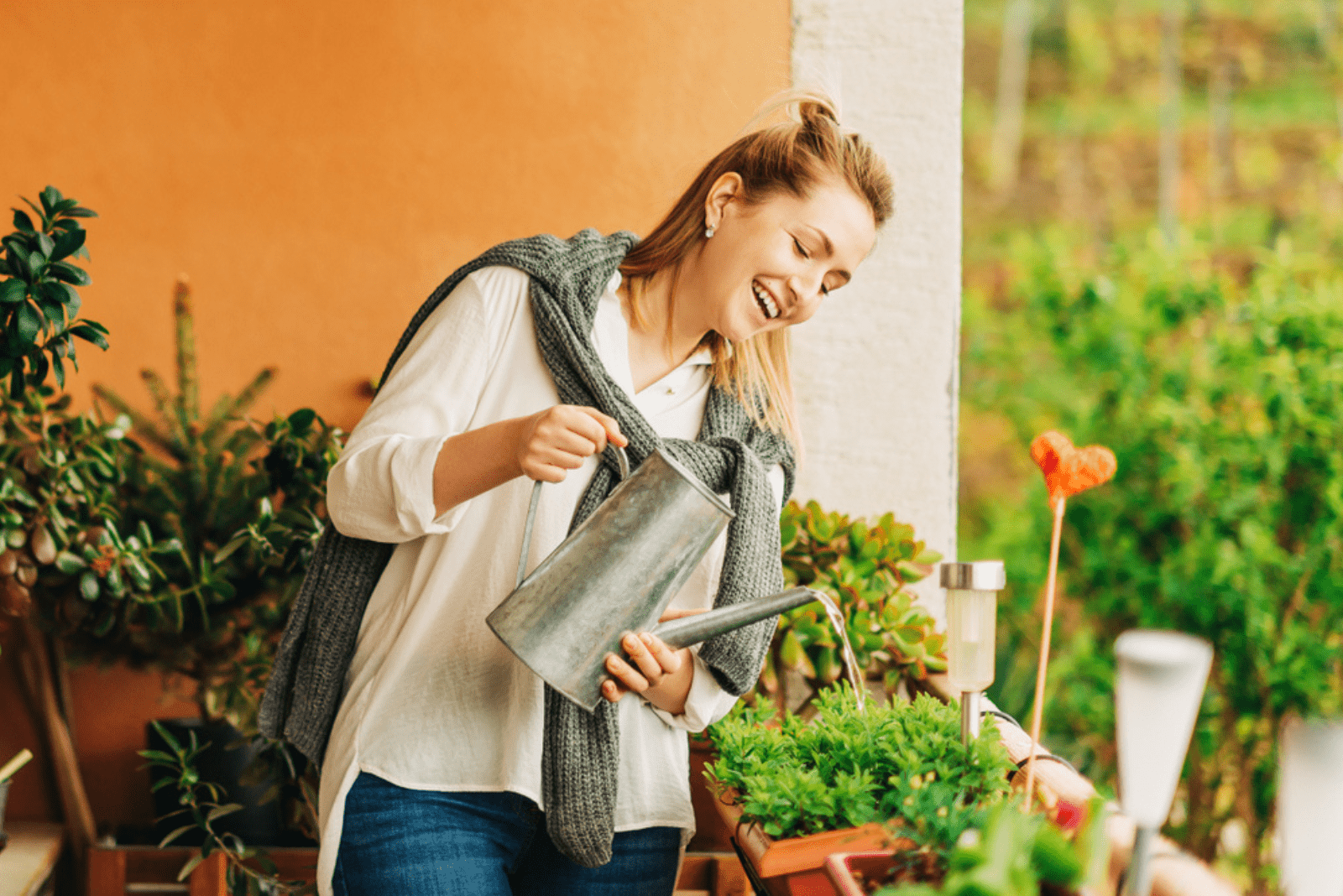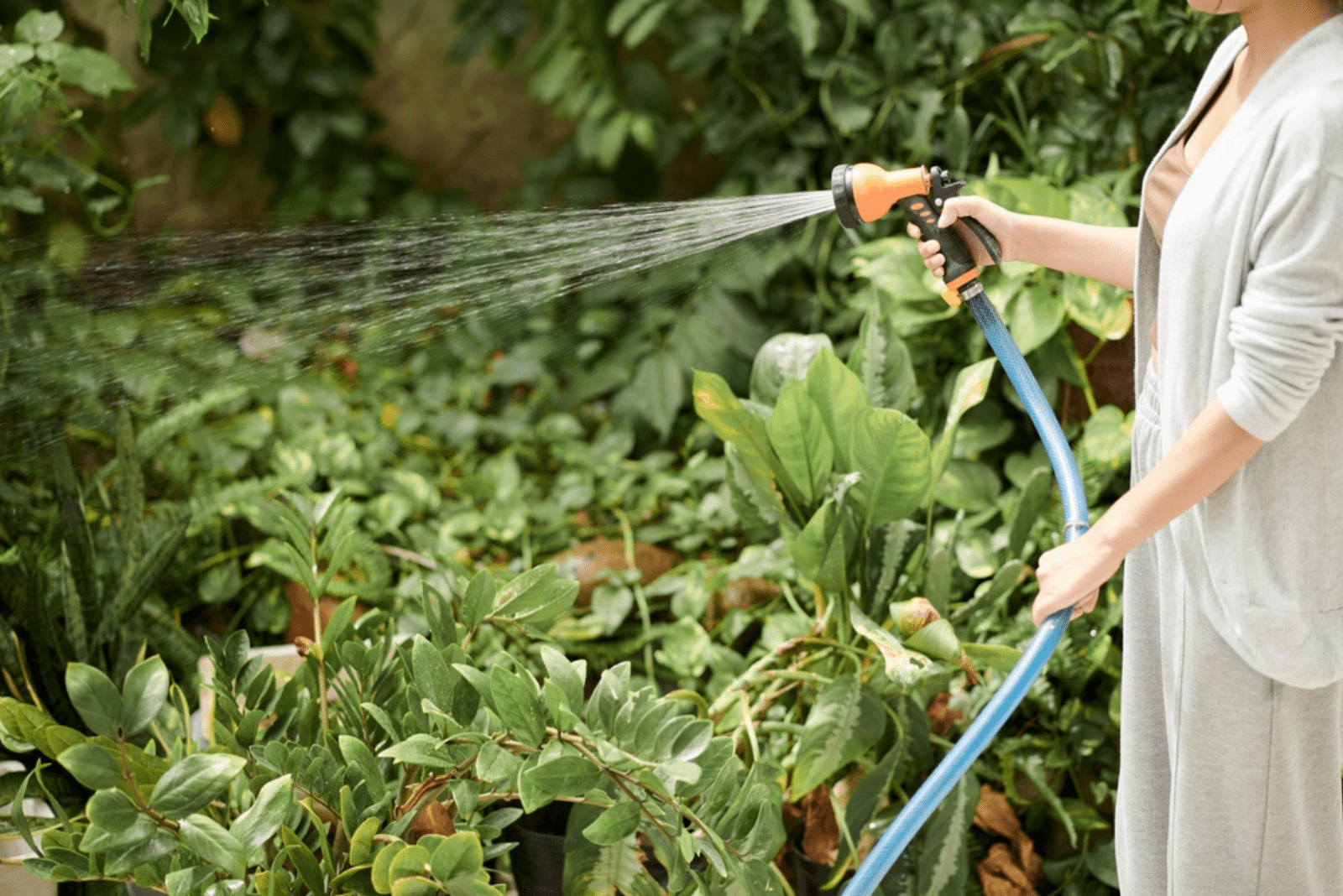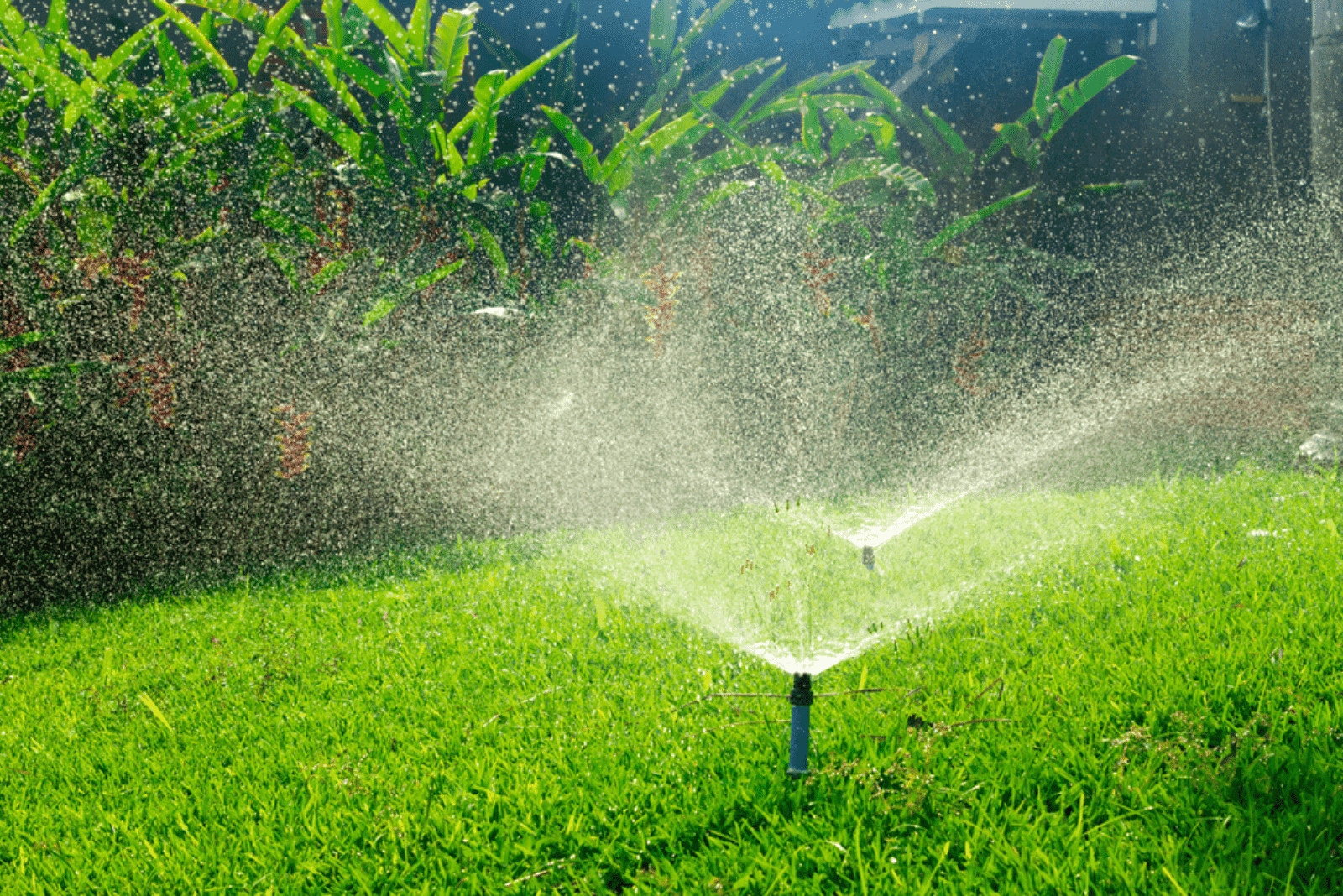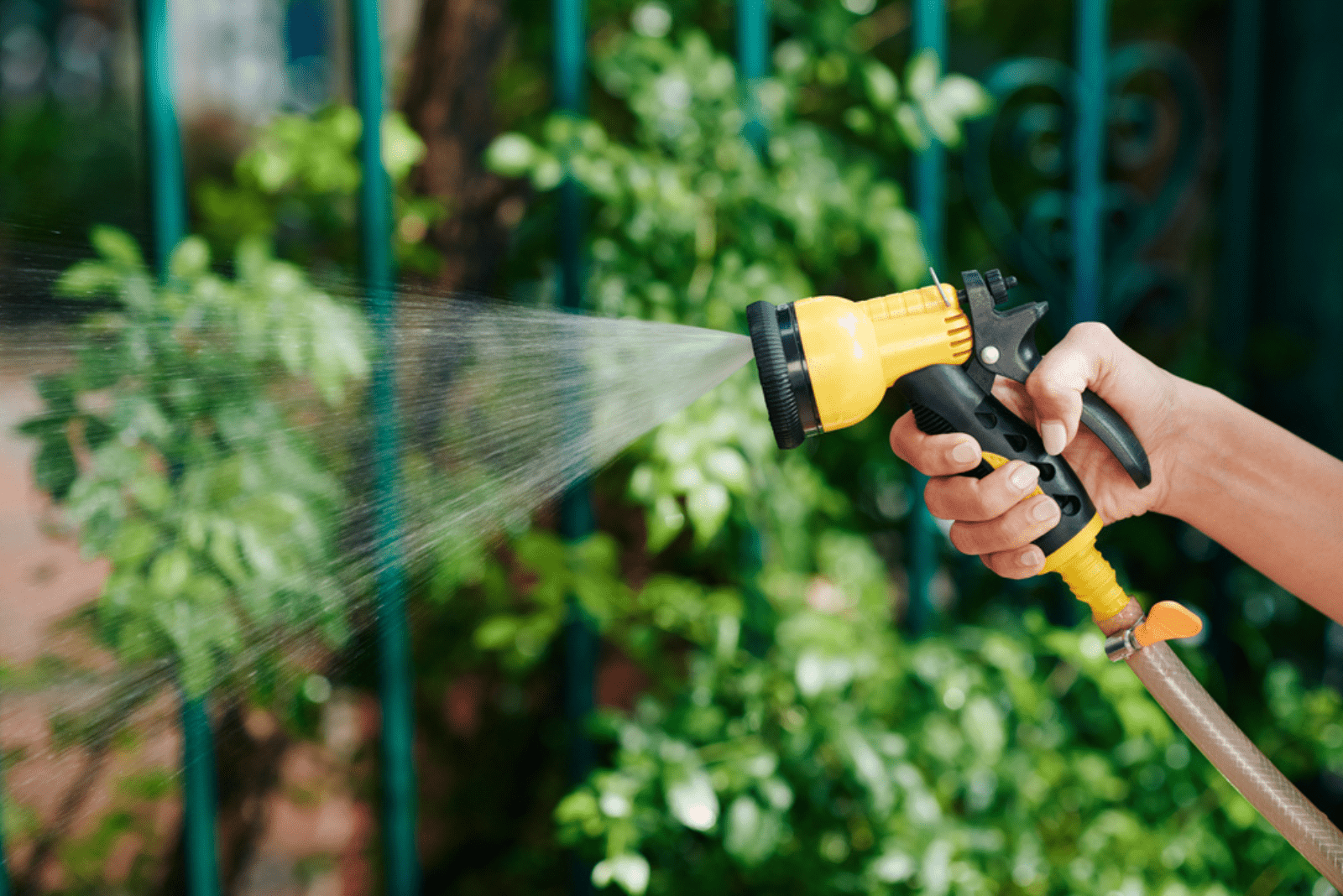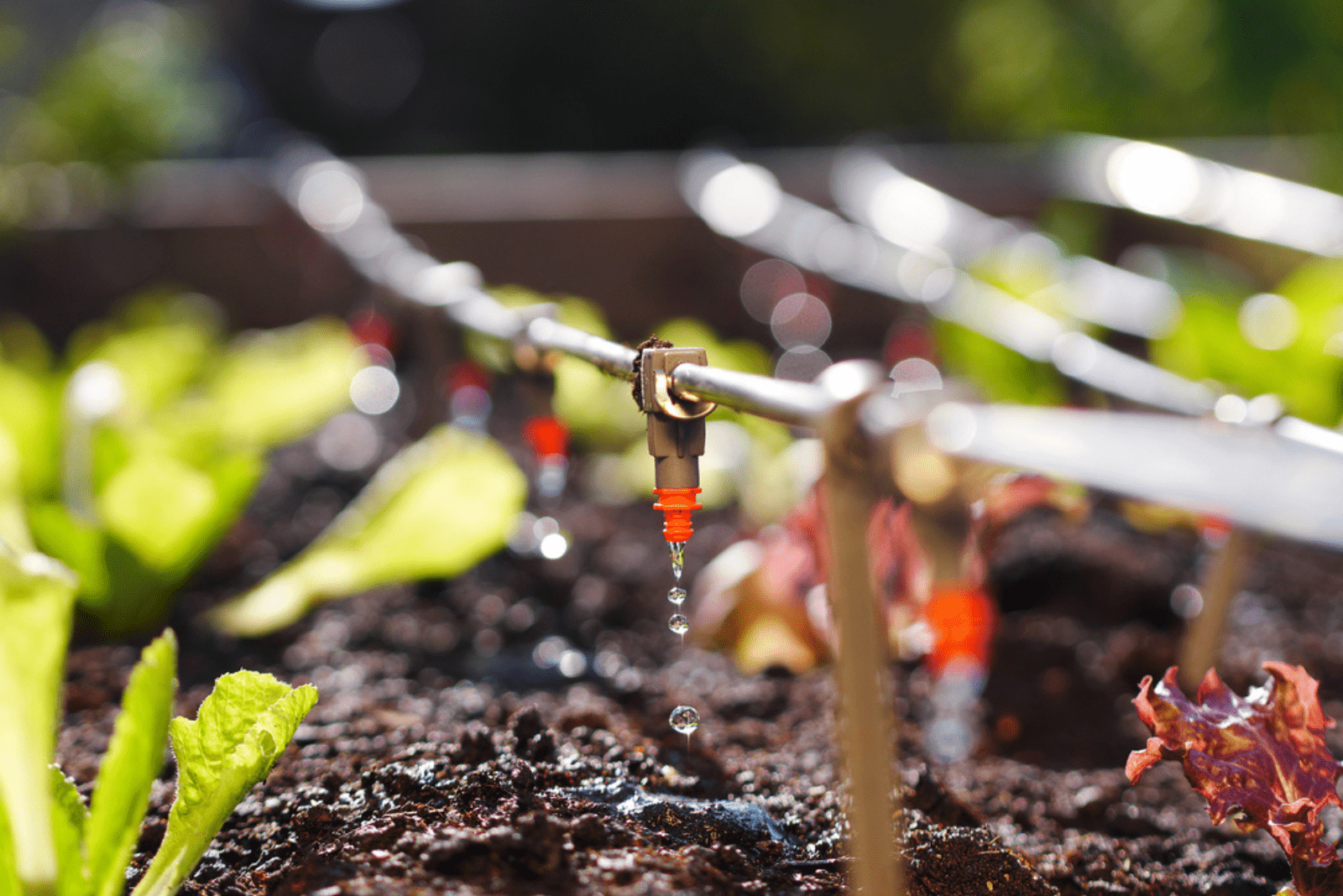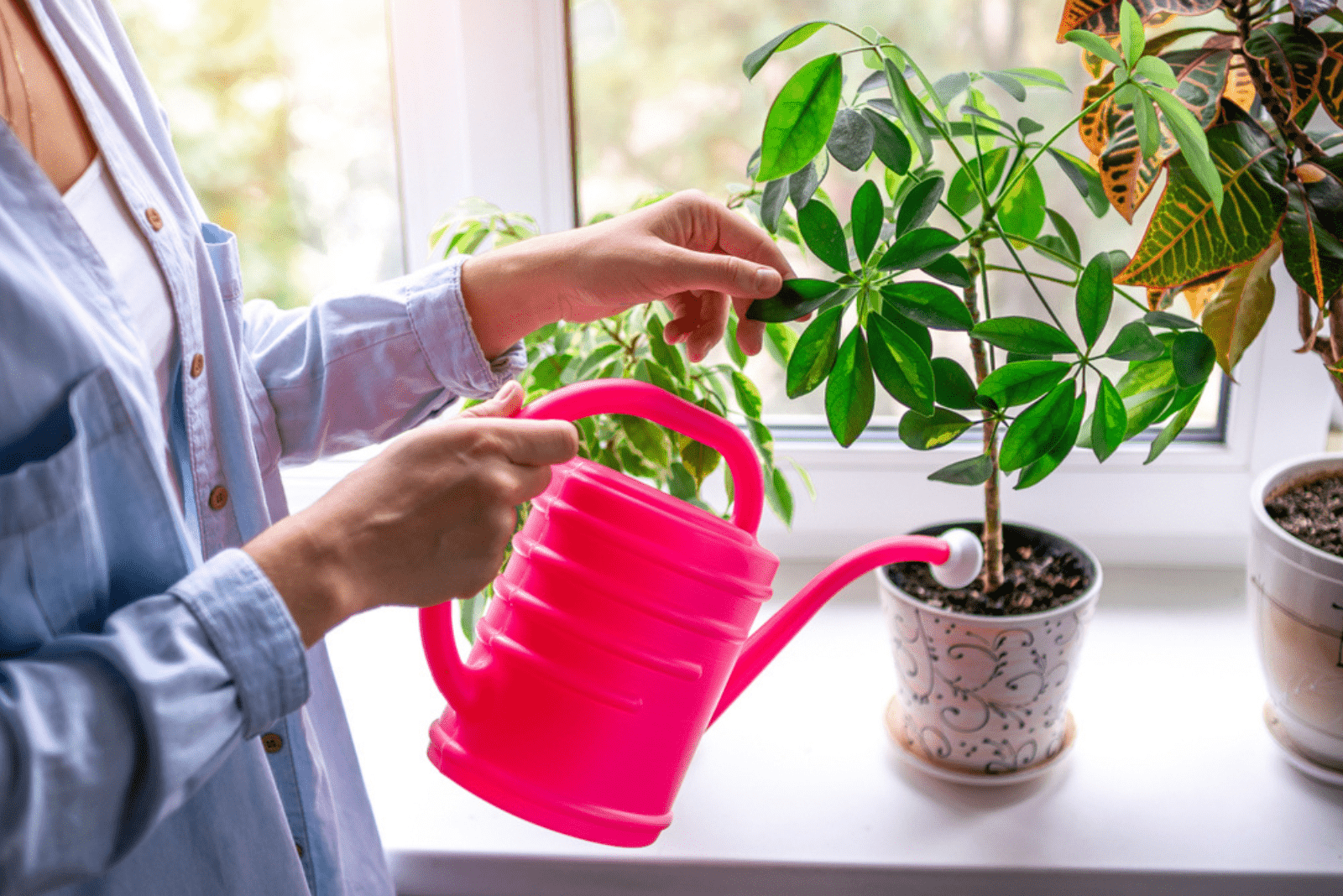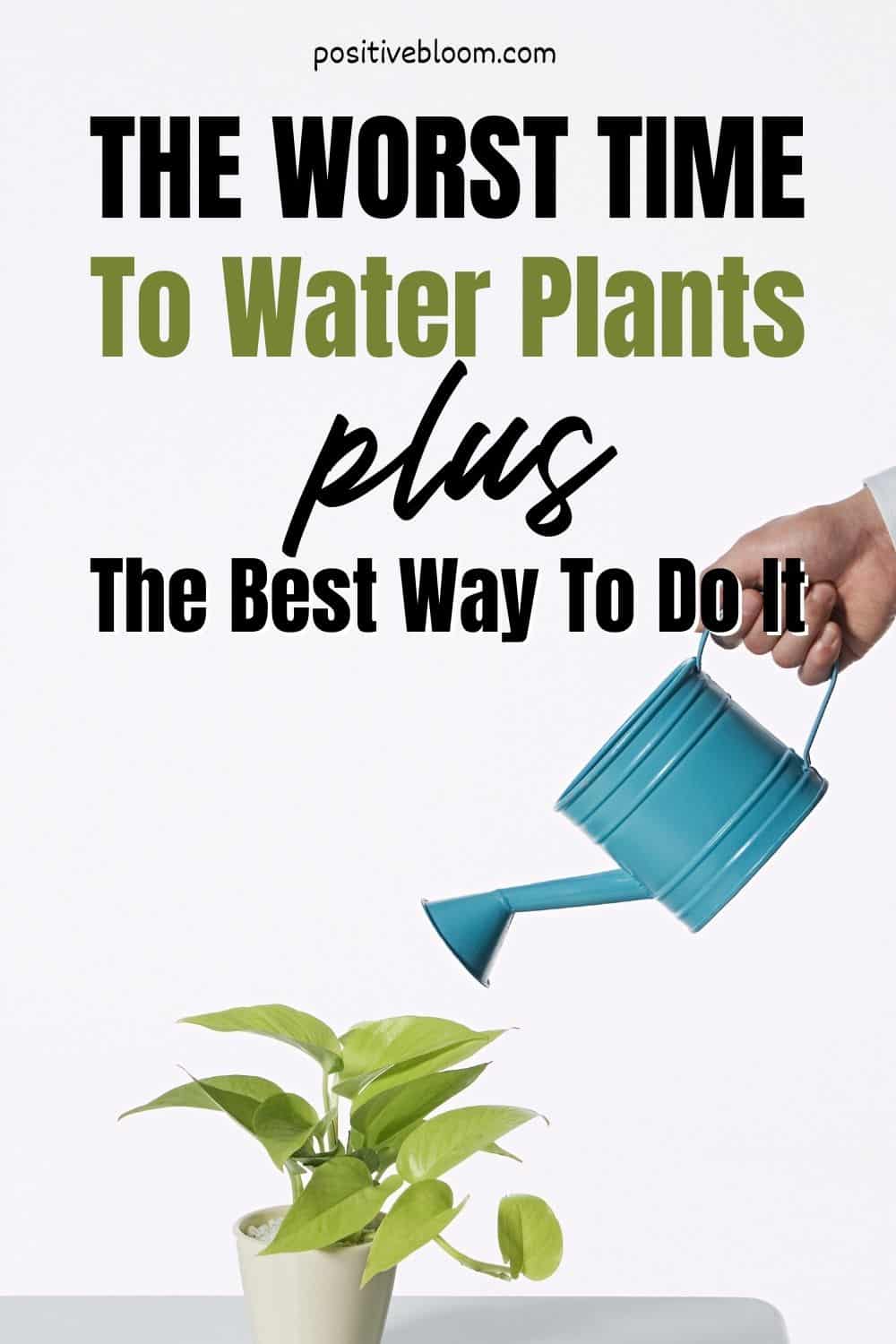Have you ever wondered when to water plants? Or do you just take your watering can or garden hose and start irrigating?
I hate to break it to you, but there is such a thing as the worst time to water plants (as well as the best time).
Of course, not all plants have the same watering needs, but there is one thing they all agree on: they hate midday irrigation!
We’ll discuss this more thoroughly in the sections below, and present the best time to irrigate your plants.
However, it’s essential to use a suitable fluid, know how to check whether your plant really needs more moisture, and consider some other factors that might affect watering. But don’t worry; we’ll talk about these things as well!
Now, let’s get started!
The Worst Time To Water Plants
You might be wondering why your plants don’t thrive when you’re doing everything you’re supposed to, like regular fertilization, an inch of water per week, and all the rest.
Well, the problem might be with the time of day you choose to irrigate your plants.
Now, avoiding traditional irrigation might save you some trouble, but let me tell you, there can be problems with self-watering planters and hydroponic systems as well.
Below, you can read more about the worst time of day to irrigate your indoor and outdoor plants.
Indoor Plants & Outdoor Plants
Even though houseplants and outdoor plants are grown in different locations, they still have similar needs regarding watering.
Watering Plants At Midday
Plants detest being watered during the middle of the day because the temperatures are higher and the evaporation rate speeds up. Plants cannot get much-needed moisture because it vanishes into thin air.
Furthermore, the soil dries out and compacts as the water evaporates, so your plant won’t be able to get the oxygen it needs to survive.
However, if you maintain room temperature indoors, and your houseplant isn’t situated on a windowsill, there’s no reason why you shouldn’t water it at midday.
Watering Plants At Night
You should also avoid irrigating your plants at night as it might create a breeding ground for fungi. Water rests in the soil and around the roots, which may lead to root rot and mold appearing on the surface of the growing substrate.
However, it is much safer to irrigate plants at night than at midday, so if you cannot find another time to hydrate your green buddies, you can take your hose or a watering can and start irrigating.
Just make sure to use less water and avoid wetting the foliage as that can lead to root rot, powdery mildew, leaf spot, and other fungal diseases.
The Best Time Of Day To Water Plants
Now that you know when you shouldn’t water your houseplants, flowers, or vegetable gardens, why not learn what the best time for plant irrigation is?
Even though there are different types of plants, such as indoor and outdoor ones, they both have similar watering preferences.
However, they don’t require the same amount of moisture, so don’t irrigate all your plants at the same time.
The Right Time Of Day To Water Outdoor And Houseplants
It is very good to know how often you should water cactus or succulent plants because they differ from other species and generally require less moisture.
However, that doesn’t change the fact that they prefer to be irrigated in the morning or afternoon. But there’s a thing with houseplants: if you maintain moderate temperatures and don’t keep your plants in direct sunlight, you can water them whenever you like.
The best time to water your indoor and outdoor plants is early in the morning or late afternoon.
However, if the temperatures are scorching and you live in an arid region, you can irrigate them in the morning and afternoon (as long as your plant care guide doesn’t say otherwise).
Early Morning
The general rule is to water your plants in the morning, preferably before sunrise. The air is still cool, so moisture won’t evaporate quickly.
The plant will drink as much as it can and store more water for the hottest time of day. Of course, once the sun rises and the temperatures get higher, the plant will seem a bit wilted, but that’s its defense mechanism and how it saves water.
Morning watering is perfect for plant growth and development, but don’t worry if you can’t get up before the sun rises. As long as you irrigate your veggies and flowers before 10 AM, your plants will be fine.
Late Afternoon
If you’ve missed the morning watering, you can still make it up to your plants. Of course, it is always better to keep them hydrated for the hottest part of the day, but you can also give them something to drink in the late afternoon after the temperatures have dropped.
However, you should be careful when irrigating your plants during this time because there’s no sunlight to dry the foliage.
Therefore, forget about sprinklers in your flower or vegetable garden as they will wet the plants’ leaves, increasing the possibility of fungal diseases.
Instead, take your garden hose or a watering can, and get to work! You can also set up a drip irrigation system that will deliver moisture at the base of the plant and leave the leaves dry.
More Watering Plant Care Tips
Proper watering technique and frequency are necessary for an attractive landscape and healthy-looking plants.
But there are so many gardening myths that we just cannot filter the truth from fiction.
Therefore, we will bring you some tips and tricks to help you properly irrigate your plants, reduce watering chores, and keep your green friends healthy.
Check The Soil Moisture
The first thing you need to pay attention to is soil moisture. If the top few inches of the growing medium are still damp, you shouldn’t irrigate your plant.
This method will quickly lead to overwatering and all the problems it carries, such as wilting, discoloration, stunted growth, and even root rot.
However, you also shouldn’t wait a long time to irrigate your plants because too little water will lead to dehydration, and your plant’s leaves will curl and dry out, turn brown, and the roots will become brittle, etc.
You can use a moisture meter to determine the soil moisture level or stick your finger into the soil. If it’s dry, you can proceed with watering.
Irrigate At The Base Of The Plant
Another gardening tip essential for healthy plants is watering near the soil’s surface.
This technique can reduce the fungal diseases that develop on top of the foliage, such as powdery mildew and leaf spot.
Use Drip Irrigation
Setting up an irrigation system can save you from having to do so much work, so choosing the best greenhouse watering system (or an outdoor one) can really help you.
In greenhouses, you can use various setups, such as sprinkler or misting systems, drip irrigation, hydroponics, boom watering systems, etc.
But in an outdoor garden, drip irrigation or a soaker hose are the best options as they don’t wet the foliage, which will prevent the burning of the leaves and the development of fungal diseases.
A fixed watering schedule can sometimes be detrimental to your plants because the soil doesn’t always dry out at the same pace.
Water Less Frequently, But More Deeply
Therefore, irrigating your plants, let’s say every Friday, isn’t always beneficial because they might need more or less frequent watering depending on the weather conditions.
For that reason, you should always check the soil before irrigating and then water your plants slowly and deeply so that moisture can reach the roots.
When hydrating your potted plants, water until you notice moisture draining through the holes in the bottom of the planter.
Take Humidity Levels And Sun Exposure Into Consideration
Plants exposed to full sun or plenty of light generally need more water because it evaporates more quickly.
On the other hand, high humidity levels also affect the watering frequency as the growing medium will dry out slower.
Use Suitable Water
When setting out to irrigate your green buddies, you should first choose the best type of water for plants because not all moisture is suitable for them.
We’ll examine a couple of options so that you can choose the one that’s most effective and affordable for you.
Distilled Water
This type of water is perfectly safe for your plants, although there might be better choices. Distilled water doesn’t contain any minerals, but there are also no contaminants in it.
It will simply hydrate your plant and nothing more.
Distilled water is also neutral in pH, which might seem good on the outside. Still, plants can benefit from a slightly acidic water pH because it releases certain minerals such as zinc, copper, iron, and manganese in the soil.
If you don’t want to spend hundreds of dollars buying this type of water, you can make your own by boiling regular water.
Spring Water
Using this type of water is too expensive for your greenhouses and vegetable gardens, but if you just have a houseplant or two, you can sacrifice a couple of dollars for their health.
Spring water is enriched with minerals that encourage plant growth and development.
Tap Water
Everyone dreads using tap water because they’ve heard it can kill their plant if used too much. But that’s a gardening myth that’s been debunked for a while now.
Yes, tap water may contain large amounts of chlorine, but plants can handle that fairly well.
However, if you’re afraid for your plants, pour some tap water into a can or a bucket and let it sit for about 24 hours in the open. The chlorine will evaporate, and you’ll have a perfectly safe liquid for your plants.
Rainwater
Rainwater is the best choice for irrigating your plants. It is free and rich in minerals, but there is a catch: you have to have somewhere you can store it.
You can always get a big plastic barrel because the benefits of this water type to your plants are myriad.
Rainwater is rich in nitrogen, which comes in a form that your plants can quickly absorb. Furthermore, this type of water contains plenty of oxygen and won’t suffocate the roots even if there’s too much of it.
This type of water is also slightly acidic as it combines with CO2 from the atmosphere, so it helps to release minerals such as iron, zinc, manganese, and copper, and make them more available to your plants.
Should You Water Plants With Hot Or Cold Water?
Hot water can kill your plants, but there is one good thing about it; it can kill pests and some pathogens. Of course, boiling water will destroy your plant, but if you use water that isn’t hotter than 120°F, you can save your plant from certain infestations and infections.
Cold water, on the other hand, doesn’t have benefits; it can just prevent your plant from blooming and damage its root system.
Mulch The Soil
Watering flowers and other plants in your garden can be a drag, but you can reduce the time you spend doing the chore.
Mulching the soil will slow down evaporation, so the medium will retain more moisture and dry out more slowly.
And if you use organic mulch, you can enrich the soil with nutrients and keep your plants healthy for longer.
Final Thoughts
The worst time to water plants is definitely at midday because moisture quickly evaporates from the soil and leaves your plants dehydrated, and watering plants at night isn’t far behind as that can lead to root rot and other fungal diseases.
Of course, we included the best times of day for irrigation (morning and afternoon) and brought some watering tips your plants could benefit from, so it shouldn’t be an issue for you.
Keep your plants healthy, and until next time!
Like this post? Share or pin it for later!

